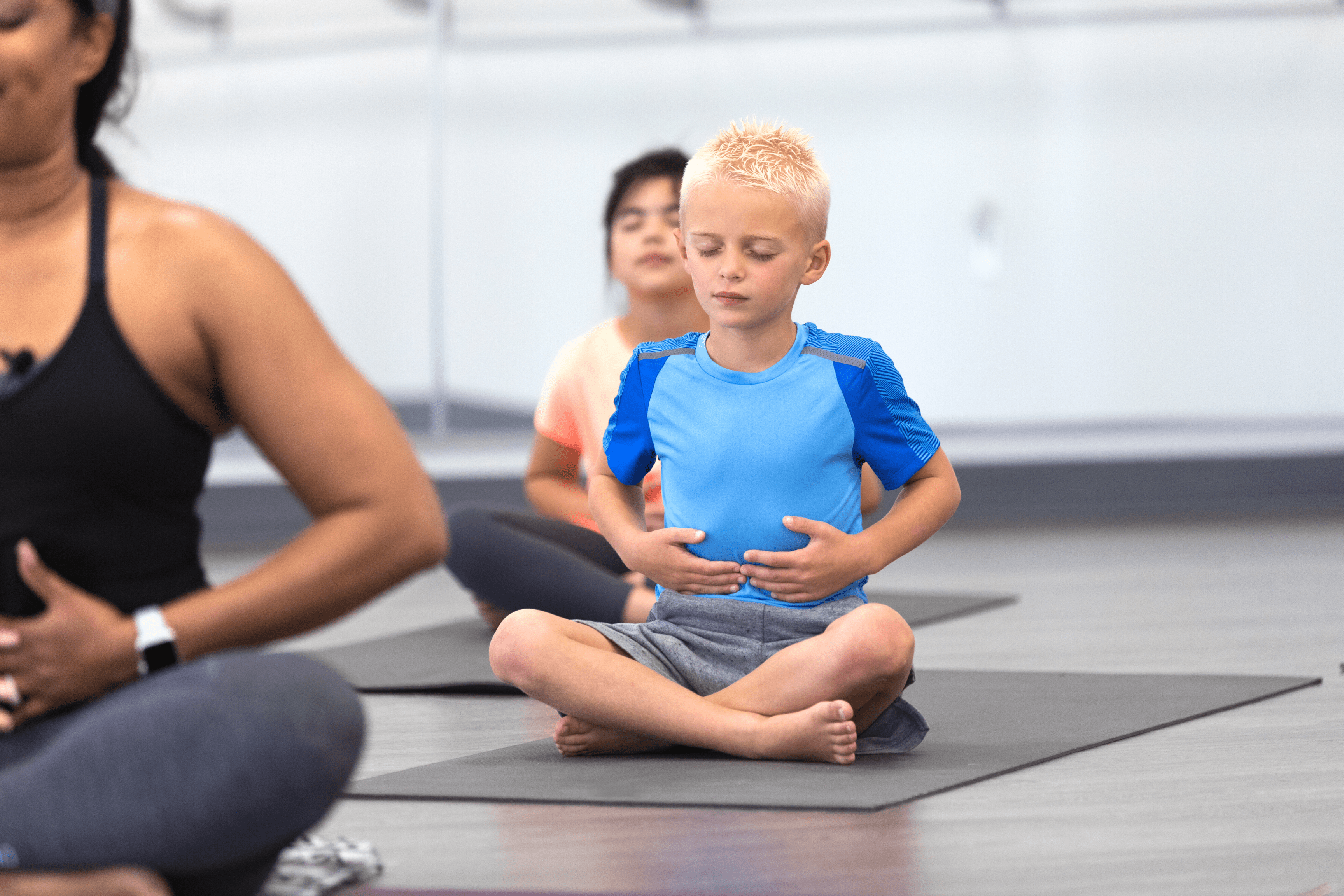
Anyone who can breathe can do breathing exercises, therefore anyone with anxiety can do breathing exercises for anxiety. It’s just that simple. Breathing is one of the few things our autonomic nervous system controls. It basically means this happens even when we don’t tell it to. That and blinking. I know there are more but I can’t remember them at this time. Lol
When I first started doing Counseling in the school setting I met another clinician who taught the elementary school students breathing exercises. I knew that that was a valuable thing. But it just hasn’t really put it together for that age group. Of course it makes sense to teach breathing skills to the younger ages. They’re still learning to deal with their bodies and deal with their bodies’ responses to stress and anxiety. So teaching them something that they can do anywhere virtually at any time is valuable to all of us.
Let’s talk about breathing exercises for anxiety with our elementary school age group
This site says that, “Taking deep, deliberate breaths can calm a person physically and mentally. Deep breathing techniques activate the parasympathetic nervous system (part of the nervous system that controls reactions to stress), as well as redirect the mind to a simple task, distracting from anxious thoughts.”
“By teaching kids breathing exercises, we’re giving them a valuable tool for their toolbox,” says Stephanie Richardson, LCSW, Social Work Team Leader in the Emergency Department at Children’s Health℠.
“Children can use deep breathing to help them throughout the day, whether they’re feeling overwhelmed or anxious, need to relax or go to sleep, to calm their body after exercising, or even just to pause and reset when they are high energy.”

Here is a link to a belly breathing exercise you can listen to with your kids. The article goes on to discuss more about belly breathing. How can you teach belly breathing to your child? Here are steps to teach and practice deep belly breathing which is a form of breathing exercises for anxiety:
- Ask your child to breathe normally and to notice how they’re feeling at the moment.
- Have your child place one hand on their belly (above the belly button) and one hand on their upper chest.
- Tell your child to take a deep breath in through their nose, filling their lungs with air downwards towards the belly.
- As their belly expands up and out, notice their bottom hand rise.
- Then tell your child to breathe out slowly through their mouth, feeling the bottom hand lower back down.
- To encourage a slow exhale, you can ask your child to pretend to blow out candles, hold their hand over their mouth to feel their breath or even to make a noise with their exhale.
- After taking several deep belly breaths, ask your child how they feel and if they notice any difference.
If your child’s hand on their chest is the only hand moving up and down as they breathe, encourage them to focus on moving the air deeper into their belly. Shallow chest breathing is more associated with anxious breathing.
As your child is learning belly breathing, it may help to have them lie down on their back during the breathing exercise. Instead of hands, you can place an object such as a small stuffed animal or book on their belly and have them attempt to make the object go up and down as they breathe. This practice is a great breathing exercise for anxiety in all ages.
Other tips for belly breathing for kids
Practice when your child is calm
One of the most important things to keep in mind when teaching belly breathing is to practice when your child is calm. By practicing when a child feels good, they will be equipped to use this tool in moments of stress or anxiety. Richardson recommends practicing at night before bed and says this can turn into a nighttime routine that can help your child fall asleep, whether they are anxious or not.
Start young
Deep breathing is a valuable tool for children of all ages. While young children, such as toddlers, may have a hard time grasping the concept of belly breathing, parents can start by teaching them to slow down their breaths when they feel upset or angry. Elementary school-aged children will be more prepared to learn the basics of belly breathing.
Use counting
When your child is practicing belly breathing, encourage them to count to three when inhaling, take a slight pause and then exhale for a count of four. Depending on your child’s age or breathing ability, they may be able to do longer counts. The actual length of the inhale and exhale is not as important as slowing their breathing and focusing their attention on this task.
Adapt to what works best for your child
Parents can see what works best for their child when teaching and practicing breathing exercises. There is no pressure to practice deep breathing in one exact or right way. “Do what makes your child feel the most comfortable, because that is the goal,” encourages Richardson. “The more comfortable your child feels with a breathing exercise, the more likely they are to use that technique when they need it most.”

How can breathing exercises for anxiety help children and teens?
Breathing exercises for anxiety can help children and teens in many ways.
- It relaxes the body.
- You can use it to train your mind to refocus your attention.
- Breathing exercise can significantly reduce stress and anxiety.
- It can lower your heart rate.
- When you are using these breathing exercises for anxiety you are Increasing the amount of oxygen flowing through your body which has a calming effect on your body and mind.
Taking deep, deliberate breaths can calm a person physically and mentally. Deep breathing techniques activate the parasympathetic nervous system (part of the nervous system that controls reactions to stress), as well as redirect the mind to a simple task, distracting from anxious thoughts.
How about breathing exercises for teens?
Healingspace.co says that using breathing exercises for anxiety is a strong tool for teens. Teenagers don’t necessarily want to talk about issues, they just want to feel better. This is why Breathwork is perfect for them to learn as an empowering, no- talking, practice that will help them find empowering ways to cope with life’s ups and downs.
Whether they are struggling with debilitating anxiety, depression or other conditions, or you simply want to resource them to feel happier and more resilient, Deborah has the experience, skills and care to support your child to know they can be empowered, take their well being into their own hands, and live their best lives.
Our teenagers have a lot to cope with social media, and an increasingly pressurized study environment, not to mention going through all the hormonal and brain changes that happen through puberty.
It’s a lot to contend with. The human body can only cope with so much before debilitating symptoms start to appear that can take them from thriving to surviving.
The “happy face” and “perfect” body illustrated on social media, often belies stress, and pressure to conform, feelings of not being “good enough”. The fact that many teens spend a lot of time on their phones or other devices, also means that the body is less active, and therefore not discharging stress through its natural mechanisms.
Shocking studies have also shown that girls breathe more poorly than boys, due to “perfect body” ideas that a sucked in belly is how they should look, as well as repressing emotions to maintain a “good girl” persona.”
Breathing exercises your teen can try today!
I found them on the medicalnewstoday.com site.
Deep Breathing – Deep breathing is simple but effective. People can do it anywhere, while sitting, standing up, or lying down. To deep breathe, a person can:
- Relax the tummy.
- Place one hand just beneath the ribs.
- Breathe in slowly and deeply through the nose, noticing the hand rise.
- Breathe out through the mouth, noticing the hand fall.
Quieting Response – The quieting response method combines deep breathing with visualization to help reduce stress and anxiety. A person should first relax all the muscles in their face and shoulders and imagine having holes in the soles of their feet.

Then they can:
- Take a deep breath, visualizing the breath as hot air entering the body through the holes in the soles of the feet.
- Imagine the hot air flowing up the legs, through the tummy, and then filling the lungs.
- Relax each muscle as the hot air passes it.
- Breathe out slowly, imagining the air passing from the lungs back into the tummy, then the legs, before leaving the body through the holes in the soles of the feet.
- Repeat until calm.
Mindful Breathing – Mindful breathing uses mindfulness to help people to focus on the here and now. To practice mindful breathing, a person should sit or lie in a comfortable position with their eyes open or closed. Then they can:
- Inhale through the nose until the tummy expands.
- Slowly let the breath out through the mouth.
- Once settled into the pattern, focus on the breath coming in through the nose and out through the mouth.
- Notice the rise and fall of the tummy as the breaths come in and out.
- As thoughts come into the head, notice that they are there without judgment, then let them go and bring the attention back to the breathing.
- Carry on until feeling calm, then start to be aware of how the body and mind feel.
Diaphragmatic Breathing – Doctors usually recommend diaphragmatic breathing to people with a lung condition called chronic obstructive pulmonary disease. A 2017 study (Trusted Source) found that it could also help reduce anxiety. A person should start either sitting up or lying down. Then they can:
- Place one hand on the tummy and the other on the upper chest.
- Breathe in through the nose, focusing on the tummy rising.
- Breathe out through pursed lips, focusing on the tummy lowering.
- Repeat the cycle.
4-7-8 Breathing – This technique is a quick and simple way for a person to relax anywhere.
A person should sit down with their back straight and the tip of their tongue on the back of their upper front teeth. Then they can:
- Breathe out through the mouth, making a whooshing sound.
- Close the mouth and count to 4 while breathing in through the nose.
- Count to 7 while holding the breath.
- Count to 8 while breathing out through the mouth, making a whooshing sound.
- Inhale, then repeat three times.
Learn more about 4-7-8 breathing here.
You can clearly see all the benefits of using breathing exercises for anxiety. I know that I frequently try to stop and take some deep breaths when I’m going through something. When you pair it with acknowledging the significant positive changes that it makes in your body and your mind, focusing on your breathing everyday can improve your health by leaps and bounds!
